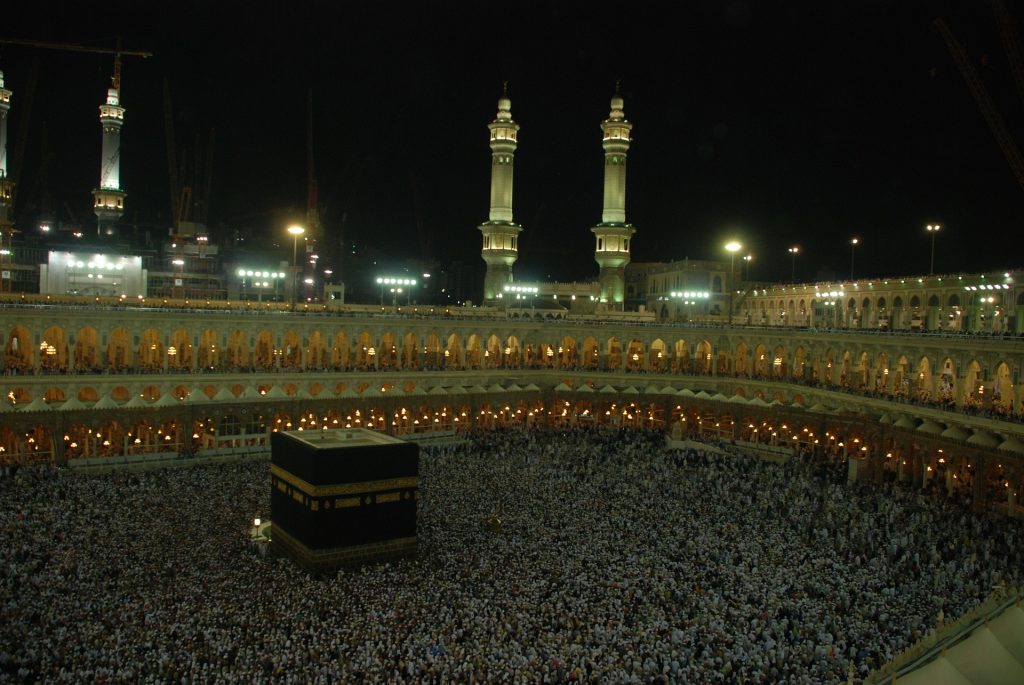




Mass-gatherings (MGs) are characterized by the concentration of people at a specific location for a specific purpose over a set period of time and which has the potential to strain the planning and response resources of the country or community. The definition is purposefully not linked to the size of the gathering or the number of people because each community has a different a capacity to manage crowds of people. MG events pose challenges to the most adept of public health practitioners in ensuring the health safety of the population. These MGs can be for sporting events, musical festivals, or more commonly, have religious undertones. Concentration of people means always a greater risk of exposure to pathogens and a higher likelihood that infectious diseases will spread. Crowding and lack of sanitation at MGs can lead to the emergence of infectious diseases, and rapid population movement can spread them across the world.

Many MGs are international and involve significantly more international travel to the host country than would normally happen. This raises the possibility that health risks, especially communicable diseases, will be brought into the host country. This will depend on the nature and number of participants and visitors and the countries from which they travel, as well as the normal travel pattern to the host country. The immunity profile of the host population will also need to be considered.
Mass gatherings put millions of international travelers and local host-country residents at risk of acquiring infectious diseases, including locally endemic infectious diseases.
The international community has developed an international standard as a generic approach to risk management, international standard ISO/ DIS 31000 Risk management - Guidelines. The standard consists of a framework of essential components to help ensure that risk is managed effectively and coherently. Within the process of risk management is risk assessment; the overall process of risk identification, risk analysis, and risk evaluation. (1)
The Hajj, an annual religious celebration, attracts millions of pilgrims. During the 1980s, a number of large outbreaks of Serogroup A meningococcal disease were identified among Hajj pilgrims. Planners assessed the risk of outbreaks in subsequent Hajj gatherings to be substantial, since few pilgrims would have immunity to this disease, and most would remain vulnerable during the crowded conditions associated with the Hajj. Planners managed the risk of Serogroup A meningococcal disease by requiring all pilgrims to subsequent Hajj celebrations to be vaccinated against meningococcal disease, and for pilgrims from sub- Saharan Africa to take clearance antibiotics. Large outbreaks of Serogroup A meningococcal disease were averted, although Serogroup W135 meningococcal disease did emerge in subsequent years. (2)
The Kumbh Mela 2013 at Allahabad, India may have been the largest gathering of humanity in history with nearly 120 million pilgrims having thronged the venue. The scale of the event posed a challenge to the maintenance of public health security and safety. A snapshot of the experience of managing the hygiene and sanitation aspects of this mega event was presented, highlighting the importance of proactive public health planning and preparedness. (3)
To accommodate the massive numbers, the Indian government constructed a temporary city on the flood plains of the two rivers and provided it with roads, electricity, water and sanitation facilities, police stations, and a tiered healthcare system. This phenomenal operation and its impacts have gone largely undocumented. To address this gap, the authors undertook an evaluation and systematic monitoring initiative to study preparedness and response to public health emergencies at the event. The document describes the water, sanitation, and hygiene components, with particular emphasis on preventive and mitigation strategies; the capacity for surveillance and response to diarrheal disease outbreaks; and the implications of lessons learned for other mass gatherings. (4)
The mosquito-borne Zika virus (ZIKV) has aroused global attention due to its rapid spread since its first detection in May 2015 in Brazil to 22 other countries and other territories in the Americas. The ZIKV outbreak in Brazil, has also been associated with a significant rise in the number of babies born with microcephaly and neurological disorders, and has been declared a ‘Global Emergency by the World Health Organization. This explosive spread of ZIKV in Brazil created challenges for public health preparedness and surveillance for the Olympics and Paralympics which were held in Rio de Janeiro in August 2016. There exists need for a coordinated collaborative response for prevention and spread of infectious diseases with epidemic potential at mass gatherings events. (5)
Dwivedi, S. and Cariappa M.P. Mass-gathering Events: The Public Health Challenge of the Kumbh Mela 2013. Prehosp. Disaster Med. 2015, Dec;30(6):621-4. https://doi.org/10.1017/S1049023X15005245
ISO 31000: 2018. Risk management. https://www.iso.org/iso-31000-risk-management.html
Petersen, E. et al. Rapid Spread of Zika Virus in The Americas – Implications for Public Health Preparedness for Mass Gatherings at the 2016 Brazil Olympic Games. International Journal of Infectious Diseases, Volume 44, March 2016, 11-15. https://doi.org/10.1016/j.ijid.2016.02.001
Vortmann, M. et al. Water, Sanitation, and Hygiene at the World’s Largest Mass Gathering. Curr. Infect Dis. Rep. 2015 Feb;17(2):461. https://doi.org/10.1007/s11908-015-0461-1
WHO. Public Health for mass gatherings: Key considerations. 2015. http://apps.who.int/iris/bitstream/handle/10665/162109/WHO_HSE_GCR_2015.5_eng.pdf?sequence=1